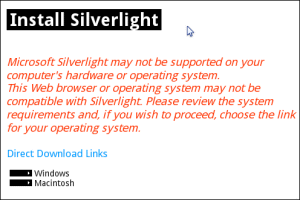How much money is enough? “Just a little bit more”, said J D Rockefeller; and Apple is taking a similar line with respect to control of its mobile platform. It is no longer enough that all apps are approved by Apple, sold by Apple, and that a slice of any sales goes to Apple. It now wants to control how you make that app as well, stipulating the tools you use and prohibiting use of others:
Applications must be originally written in Objective-C, C, C++, or JavaScript as executed by the iPhone OS WebKit engine.
On the face of it, bad news for third-party companies like Adobe, whose Flash to iPhone compiler is released tomorrow, Novell’s Monotouch, or Unity3D:
JavaScript and C# scripts are compiled to native ARM assembler code during the build process. This gives an average performance increase of 20-40 times over interpreted languages.
What is interesting is not only the issue itself, but the way debate is being conducted. I don’t know how Novell is getting on in “reaching out to Apple” concerning Monotouch, but as far as I can tell Apple introduced the restriction by revising a clause in a contract shown only to paid-up iPhone developers and possibly under NDA, then seeing if anyone would notice. Now that sparks are flying, CEO Steve Jobs is participating by one-line emails to a blogger referencing a post by another blogger, John Gruber.
Further, his responses do not altogether make sense. Gruber’s post is long – does Jobs agree with all of it? Gruber says that Apple wants the lock-in:
So what Apple does not want is for some other company to establish a de facto standard software platform on top of Cocoa Touch. Not Adobe’s Flash. Not .NET (through MonoTouch). If that were to happen, there’s no lock-in advantage.
Probably true, but not the usual PR message, as lock-in is bad for customers. How much are inkjet cartridges? I suspect Jobs was thinking more of this part:
Cross-platform software toolkits have never — ever — produced top-notch native apps for Apple platforms. Not for the classic Mac OS, not for Mac OS X, and not for iPhone OS. Such apps generally have been downright crummy.
As it happens, I think Gruber, and by extension Jobs, is wrong about this; though it all depends what you mean by the output of a cross-platform toolkit. Firefox? NeoOffice? WebKit, as found in Safari? Jobs says:
We’ve been there before, and intermediate layers between the platform and the developer ultimately produces sub-standard apps and hinders the progress of the platform.
Well, we know he does not like Java – “this big heavyweight ball and chain” – but there are many approaches to cross-platform. In fact, I’m not even sure whether Jobs means technical layers or political layers. As Gruber says:
Consider a world where some other company’s cross-platform toolkit proved wildly popular. Then Apple releases major new features to iPhone OS, and that other company’s toolkit is slow to adopt them. At that point, it’s the other company that controls when third-party apps can make use of these features.
The point is: we don’t know what Jobs means. We might not know until apps hit the app store and are approved or not approved. It is a poor way to treat third parties who are investing in your platform; and that was one part of the reason for my initial reaction: it stinks.
The other reason is that I enjoy the freedom a personal computer gives you, to install what you want, from whomever you want, and the creativity that this inspires. At the same time, I can see the problems this has caused, for security, for technical stability, and for user experience. Personal computing seems to be transitioning to a model that gives us less control over the devices we use, and which makes a few privileged intermediaries more powerful and wealthy than anything we have seen before.
In the end, it is Apple’s platform. Apple does not yet monopolise the market – though my local supermarket has iPods in all sorts of colours but no other portable music player on sale – and the short answer is that if you don’t like the terms, don’t buy (or develop for) the product.
As Apple’s market share grows, the acceptability of its terms will lessen, and protests will grow louder, just as they did for Microsoft – though I hesitate to make that comparison because of the many differences between the two companies and their business models. Having said which, looking at Zune and Windows Phone 7, Microsoft seems to like Apple’s business model enough to imitate it.

